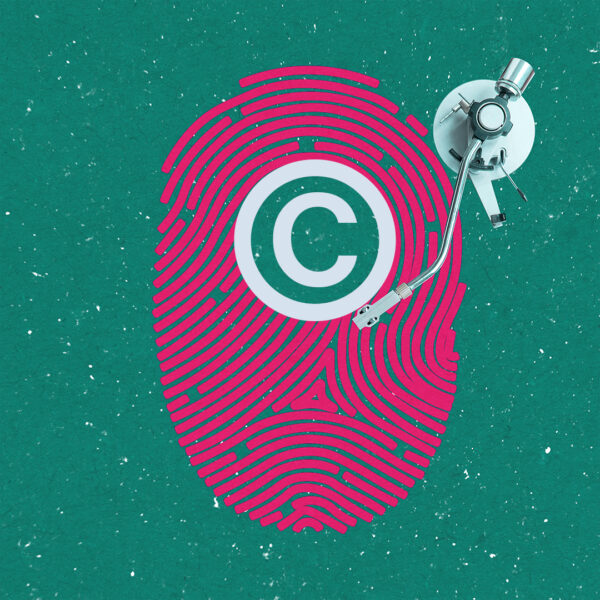Ever wondered what it takes to get your book from a brilliant idea to a bookshelf near you? Spoiler alert: it’s not just about writing a great manuscript. Before your book can even think about being published, you need a winning book proposal. Think of it as your book’s elevator pitch, but on paper, and with fewer awkward pauses.
A book proposal is where you convince agents and publishers that your book isn’t just another idea lost in the pile, but a must-have project. It’s part art, part strategy, and all about showing why your book deserves the spotlight. In this guide, you’ll learn how to write a book proposal that commands attention, see examples of proposals that work, and get tips on submitting yours like a pro. Ready to get started?
What Is a Book Proposal and Why Do You Need One?
A book proposal is a detailed document that outlines your book idea and convinces publishers or literary agents that your project is worth their time and investment. It serves as a business plan for your book, showing how it fits into the market and who your target audience is. Unlike fiction, where authors often submit a complete manuscript, nonfiction writers usually start with a proposal to sell their idea first.
The proposal typically includes an overview of your book, a detailed chapter-by-chapter outline, a market analysis identifying your target readers, a comparison to similar books (called competitive titles), information about you as the author, and sample chapters. This comprehensive package helps publishers understand the scope and potential success of your book.
Why is this important? Because publishers receive thousands of ideas and need a clear, persuasive summary to decide which projects to back. A strong book proposal shows that you’ve done your homework, understand your audience, and have a marketable concept. Without it, even the most promising manuscripts can get overlooked.
How to Write a Book Proposal: Step-by-Step Guide
A well-crafted book proposal is essential for capturing the interest of literary agents and publishers. It’s not just a summary; it’s a persuasive document that demonstrates your book’s marketability and your expertise as an author. If you’re wondering how to write a proposal for your book, here’s a breakdown of each key section to include and how to approach it:
1. Overview/Introduction
Begin with a compelling summary of your book. This section should be concise, about one to two paragraphs, and communicate your book’s central idea, purpose, and unique selling point. Explain what the book covers, its tone, and why it’s timely or important. The goal is to hook your reader immediately and make them want to learn more.
2. Target Audience
Identify exactly who will read your book. Define your audience by demographics (age, gender, profession), interests, and needs. For example, are you writing for beginner gardeners, busy entrepreneurs, or parents of toddlers? Demonstrating a clear understanding of your readers shows publishers there is a defined market for your book.
3. Author Bio
This section highlights your qualifications and platform. Include relevant credentials, writing experience, and any previous publications. Also mention your reach, such as social media followers, email subscribers, or professional networks, that could help promote the book. Publishers want authors who can help sell their work.
4. Market Analysis
Show that you’ve researched the current market. Discuss trends related to your topic and how your book fits within them. Explain what gaps your book fills or what fresh perspective it offers. This section assures publishers that your book is commercially viable.
5. Competitive Titles
List 3 to 5 similar books currently available and describe how your book differs or improves upon them. This isn’t about knocking competitors but demonstrating your awareness of the market and your book’s unique position.
6. Chapter Outline
Provide a detailed outline of each chapter with a summary of the content and objectives. This helps publishers understand the book’s structure and scope. Aim for clarity and logical flow to show the progression of ideas or a story.
7. Sample Chapters
Include one to three sample chapters that best represent your writing style and the book’s tone. Choose chapters that highlight your strengths and make the book’s concept clear. These samples give publishers a tangible sense of your work quality.
Remember, a strong book proposal balances thorough information with engaging writing. Follow the submission guidelines of each publisher or agent carefully, tailoring your proposal to their preferences. Investing time in crafting a clear, professional proposal will greatly improve your chances of getting noticed and published.
Your Publishing Journey Awaits – Start NowBook Proposal Example: What a Winning Proposal Looks Like
Seeing a real book proposal example can make the process less intimidating and help you understand what publishers expect. Below is a simplified excerpt from a nonfiction book proposal to illustrate key elements and style:
Overview:
“The Mindful Entrepreneur” explores how mindfulness practices can boost creativity, reduce stress, and improve decision-making for small business owners. This book offers practical tools backed by scientific research and inspiring stories, targeting entrepreneurs who want to succeed without burning out.
Target Audience:
This book is aimed at entrepreneurs aged 25-45 who are interested in personal development and sustainable business growth. Many are tech-savvy professionals juggling multiple roles, seeking ways to improve focus and work-life balance.
Author Bio:
Jane Doe is a certified mindfulness coach and business consultant with over 10 years of experience. She hosts a popular podcast on mindfulness for professionals and has written for leading business magazines.
Market Analysis & Competitive Titles:
While books like “The Miracle of Mindfulness” and “The Lean Startup” touch on related topics, “The Mindful Entrepreneur” uniquely combines mindfulness techniques with practical business strategies, filling a gap for entrepreneurs specifically.
Chapter Outline (sample):
- Chapter 1: Why Mindfulness Matters in Business
- Chapter 2: Tools to Cultivate Focus
- Chapter 3: Managing Stress in High-Pressure Situations
- Chapter 4: Mindful Leadership and Team Building
Sample Chapter:
Included is Chapter 2, which introduces simple mindfulness exercises designed for busy schedules, illustrated with case studies.
This example highlights clarity, focus, and market awareness, all crucial for a winning proposal. Tailoring your proposal like this can significantly increase your chances of catching an agent or publisher’s eye.
How to Submit a Book Proposal: From Query to Contract
Once your book proposal is polished and ready, the next crucial step is submitting it correctly. Understanding where, how, and when to submit can make all the difference in getting noticed.
1. Research Agents and Publishers
Not all publishers accept unsolicited proposals, and many prefer submissions through literary agents. Start by identifying agents or publishers who specialize in your genre or subject. Use resources like the Writer’s Market, agency websites, and industry databases to find the right contacts.
2. Prepare a Query Letter
Most submissions begin with a query letter, a brief, professional introduction that highlights your book’s concept and your qualifications. Keep it concise, clear, and tailored to the specific agent or publisher.
3. Follow Submission Guidelines Carefully
Each agent or publisher will have specific guidelines for submitting proposals, often detailed on their websites. These may include formatting requirements, preferred file types, or what to include in the package (e.g., query letter, proposal, sample chapters). Ignoring these can result in automatic rejection.
4. Submit Your Proposal
Send your materials via the preferred email or an online submission portal. Ensure your files are properly named and formatted to make it easy for readers to review.
5. Track Your Submissions and Follow Up
Keep a detailed record of where and when you’ve submitted. If you haven’t heard back within the typical response time (often 6-8 weeks), a polite follow-up email is acceptable.
6. Be Patient and Persistent
Publishing is a competitive industry, and rejections are common, even for strong proposals. Use any feedback you receive to improve your materials and keep submitting.
By carefully targeting your submissions and adhering to guidelines, you increase your chances of finding the right home for your book.
Bonus Tips: How to Make Your Book Proposal Shine
Even with a solid book proposal, a few extra touches can help you stand out in a crowded marketplace. Here are some insider tips to give your proposal that competitive edge:
1. Highlight Your Unique Selling Point
What makes your book different from others on the market? Whether it’s your expertise, fresh perspective, or a new approach, make sure this stands out clearly throughout your proposal.
2. Personalize Each Submission
Tailor your proposal and query letter to the specific agent or publisher. Mention why your book fits their list and show you’ve done your research. This personal touch demonstrates professionalism and genuine interest.
3. Keep Formatting Professional and Consistent
Use a clean, easy-to-read font and format your document consistently. Avoid gimmicks or overly flashy layouts. Publishers appreciate clarity and professionalism.
4. Use Clear, Engaging Language
While you want to be professional, don’t be afraid to inject your personality into your writing. A proposal that’s engaging and authentic can make a memorable impression.
5. Proofread Thoroughly
Typos or errors can hurt your credibility. Review your proposal multiple times, and consider asking a trusted friend or editor to proofread it as well.
6. Be Ready to Adapt
If you receive feedback, be open to revising your proposal. Flexibility can improve your chances of success.
These tips help transform a good proposal into a great one, increasing your chances of catching the eye of publishers and agents. Keep these in mind as you prepare your submission and stay confident in your book’s potential!
Your Next Steps to Getting Published
Writing a strong book proposal is your first big step toward turning your book idea into a published reality. By understanding what a book proposal is, carefully crafting each section, and submitting it professionally, you greatly improve your chances of catching the attention of agents and publishers.
Remember, your proposal is more than just a summary, it’s your book’s sales pitch. Take the time to research your market, highlight your unique voice, and present your idea clearly and confidently. Rejections are part of the journey, but persistence and professionalism will take you far.
Now that you know how to write a proposal for your book, polish it, and submit it, it’s time to take action. Start drafting, refine your work, and send your proposal to the right people. Your book deserves to be read, and this is how you make that happen.
Good luck on your publishing journey!
FAQs – Book Proposal
Q1: What is typically included in a book proposal?
A book proposal usually includes an overview or summary of the book, a target audience description, an author bio, a market analysis, a competitive titles section, a detailed chapter outline, and sample chapters. This package shows publishers what your book is about, who it’s for, and why you’re the right author.
Q2: How long does it take to write a book proposal?
The time to write a book proposal varies depending on the complexity of your book and your experience, but it typically takes several weeks to a few months. Writing a thorough proposal requires research, drafting, revising, and tailoring it to specific agents or publishers.
Q3: How many pages should a book proposal be?
Most book proposals range from 15 to 30 pages. This length is enough to provide a clear overview, detailed chapter summaries, and sample chapters without overwhelming the reader.
Q4: How do I submit a book idea to a publisher?
First, research publishers and literary agents who accept submissions in your genre. Usually, you start by sending a query letter or email that summarizes your book and your credentials. If requested, you then submit your full proposal or manuscript following the publisher’s submission guidelines.
Q5: Do fiction books need a book proposal?
Generally, fiction writers submit a complete manuscript rather than a proposal. However, some nonfiction-adjacent fiction, like memoirs or certain hybrids, might require a proposal. It’s best to check submission guidelines for your specific genre.
Q6: What is a synopsis for a book proposal?
A synopsis is a concise summary of your book’s main plot, themes, or argument. For nonfiction, it highlights the key points and structure, while for fiction, it outlines the storyline, major characters, and conflicts, usually in one to two pages.
Q7: How many chapters do you need for a book proposal?
A book proposal typically includes a detailed outline of every chapter you plan to write. There is no fixed number, but nonfiction books often have 8 to 15 chapters outlined, each with a brief description.
Q8: Why is a book proposal important?
A book proposal is important because it acts as your pitch to agents and publishers, helping them understand your book’s concept, market potential, and why you’re qualified to write it. It increases your chances of getting a publishing contract.








